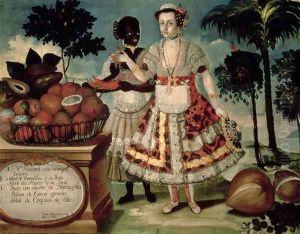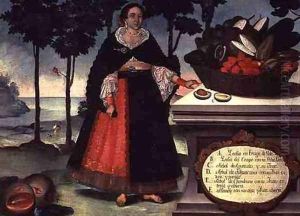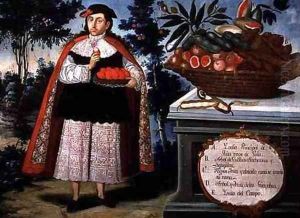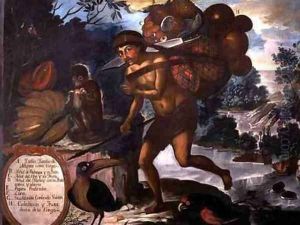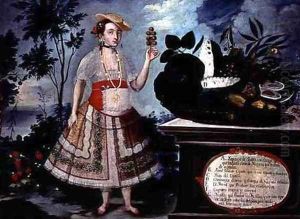Vicente Alban Paintings
Vicente Albán was an Ecuadorian painter who was active during the 18th century, specifically known for his work in the 1780s. While the exact dates of his birth and death are not well documented, his contributions to the art world during the colonial period in Ecuador are of significant historical and artistic importance. Albán is most renowned for his detailed paintings that depict the people, flora, and fauna of the Spanish colony of Quito (present-day Ecuador).
Albán's most famous works are a series of paintings that represent the social hierarchy and diversity of the inhabitants of Quito. These paintings are characterized by their intricate detail and rich color, which provide a visual record of the costumes and customs of the various social classes during that period. They are an invaluable source of ethnographic and botanical information, as they meticulously illustrate the different ethnic groups and their traditional attire, as well as the native plants and animals of the region.
The artist’s style reflects the influence of the Quito School, a distinctive artistic tradition that arose in the area. The Quito School is known for blending European Renaissance and Baroque styles with indigenous art forms, creating a unique hybrid that was prevalent in the works of local artists during the Spanish colonial period. Albán’s work stands out for its attention to detail and the lifelike quality of his subjects.
Despite the historical importance of his paintings, much of Vicente Albán's life remains a mystery. There is little documented evidence about his training, his personal life, or the extent of his artistic production. Nevertheless, his existing works are housed in several important collections and continue to be studied for their artistic merit and cultural significance. Albán's paintings not only contribute to our understanding of colonial-era Ecuador but also represent a valuable artistic achievement in their own right.
